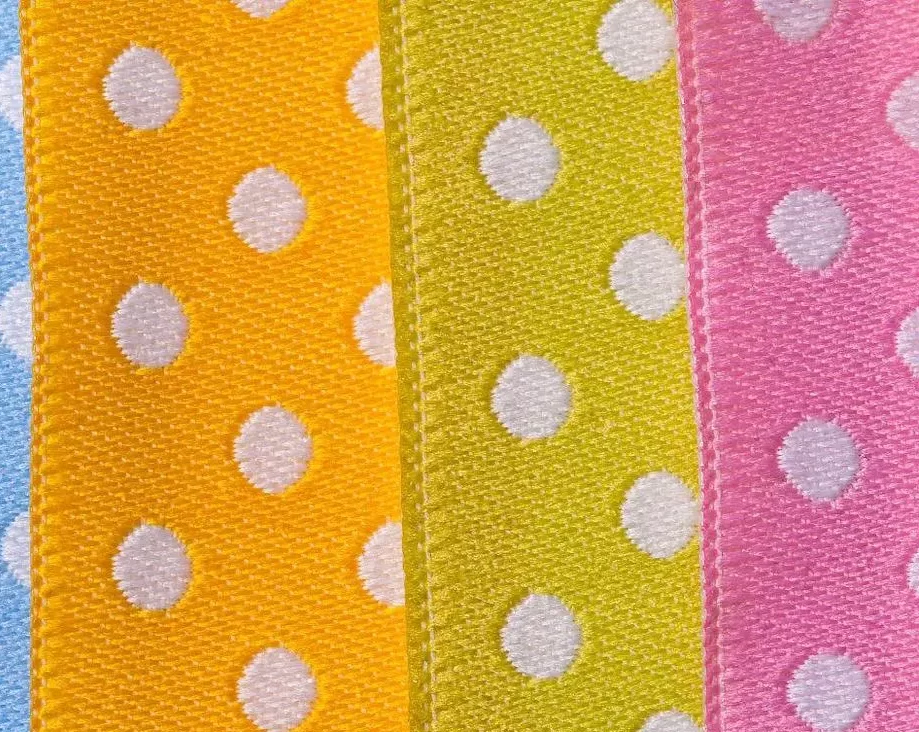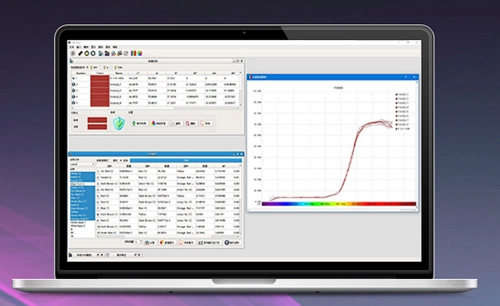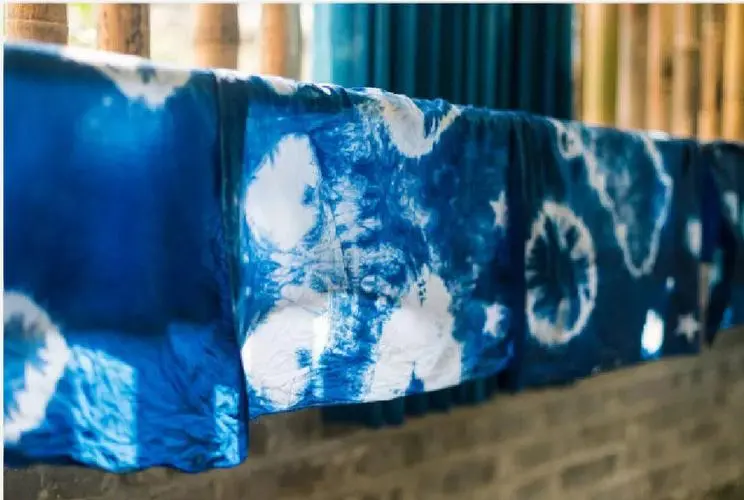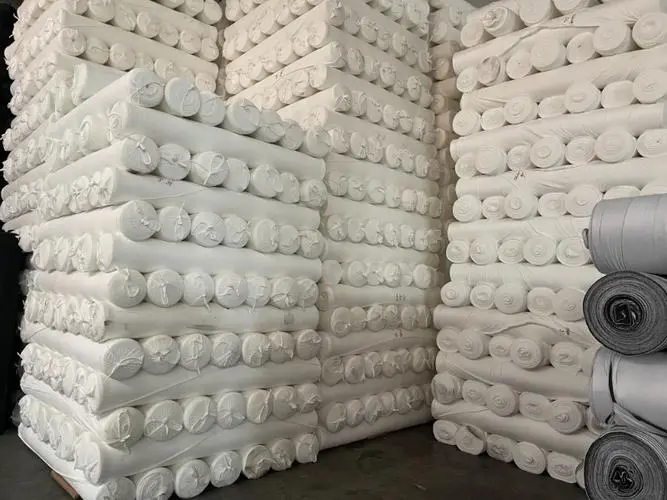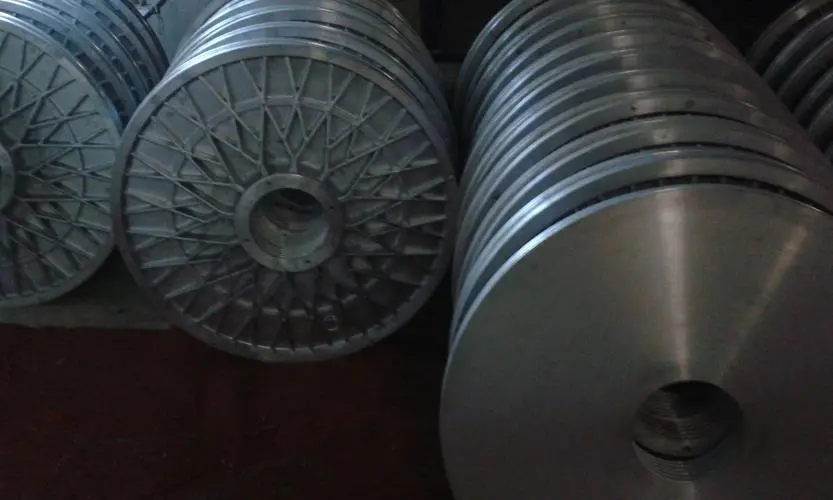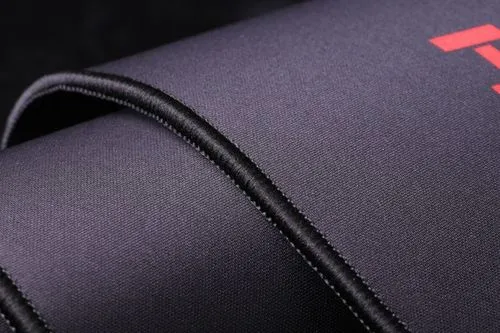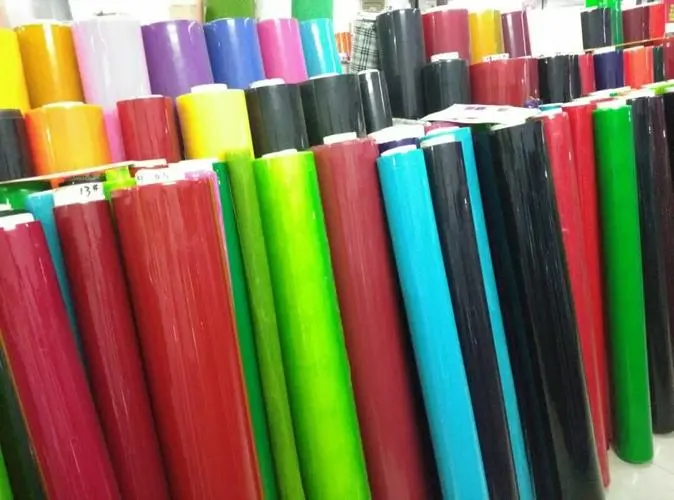Printing and dyeing, or dyeing and finishing, is a kind of textile processing. It is also the general name for pre-treatment, dyeing, printing, finishing, and washing.
Dyeing and finishing
Dyeing and finishing is the chemical treatment of textiles (fibres, yarns, and fabrics). It is often called printing and dyeing. They combine it with spinning, weaving, or knitting. Together, they are the full textile manufacturing process.
The dyeing and finishing process mainly covers pretreatment, dyeing, printing and finishing. Printing is a partial dyeing technique. It is similar to dyeing in principle and in the dyes used.
Dyeing Vol.01
Dyeing is the process of transferring dye to the fibres. It must create a uniform, stable, and vibrant colour on the fibres. The chemical structure of different fibres varies. The types of dyes that you can use on them also differ. Commonly used dyeing methods are high temperature method, carrier method and thermolysis method.
If a fabric has two coloured, different-material fibres, it was likely dyed.
If a fabric has multiple fibres, it needs different dyes and dyeing temps. You cannot dye them in a single pass.
Printing Vol.02
We call the process of forming a pattern on the fabric by applying dyes or paints printing. It has four types: flat screen, circular screen, transfer, and digital printing. Printing is partial dyeing and needs some colour fastness. The dyes used are basically the same as the dyeing. They mainly use direct printing, but can also use coating printing. The coating process is simple, but it is hard to print large areas of a pattern.
Usually, they dye the printing on one side. Someone penetrates the other side. There will be some difference between the front and back sides.
Colour Weaving Vol.03
Colour Weaving is dyeing yarns or filaments and then weaving them into fabrics. These fabrics can be full-colour or half-colour.
Identification: If a fabric is pure, like pure wool, it will be a solid color or a plaid pattern.
Polyester Vol.04
Polyester is a special raw material, because there are many modified polyester.
For example, cationic polyester (cationic dye dyeable polyester), low temperature dyeable polyester.
A manufacturer can dye a piece of fabric in two colours if it has cationic and normal polyesters. You can dye it in two colours at low temps. It must have low-temp and normal polyesters.
Colour mixing
To obtain a particular shade, someone pieces together two or more dyes. The dyestuffs are usually black, white, red, yellow and blue.
Colour blocking
Colour blocking is the process of dyeing two or more dyestuffs in order to obtain a specific shade. Magenta, yellow and cyan are the three primary colours of dyes.
All other colours
are made up of these colours by colour blocking.
Computer colour matching
With the rise of colourimetry and colour measuring tools, we can now use computerised colour matching.
Determination of colours
The colour of any piece of fabric has three components: hue, saturation and lightness.
Hue
Hue, also called hue, is a colour’s basic characteristic. It reflects its basic appearance.
Saturation
Saturation, also called purity, refers to the degree of purity of a colour.
Brightness
Dye different fibres and fabrics with the same colour. They will look completely different. Both fabrics, cotton poplin and polyester sateen, are the same color. They have the same hue, saturation, and brightness. However, sateen fabrics tend to be shinier and more vibrant. This is mainly due to the way the surface of the cotton fabric reflects light in a more diffuse manner.
What are the different methods of printing and dyeing fabrics?
There are several methods of fabric dyeing and printing:
1. Garment dyeing:
This method directly dyes the garment. It suits small-batch, multi-species production. But, it cannot withstand tension or rolling pressure. So, it is only for dyeing loose fibres, yarns, knitted fabrics, and woolen fabrics. These materials undergo dyeing and cannot withstand tension or rolling pressure.
2. You can divide fabric dyeing by fabric type. There’s woven, knitted, and non-woven fabric dyeing. Both dip-dyeing and roll-dyeing can carry out fabric dyeing.
3. Yarn dyeing:
It includes twisted, cylinder, warp, and continuous warp yarn dyeing. This dyeing method works on various yarns. You can choose different dyeing processes based on your needs.
4. Loose fibre dyeing:
This method is for dyeing loose fibres, yarns, and knitted and woolen fabrics. It suits other dyed materials that can’t withstand tension or rolling pressure. The dyeing equipment is simple, easy to operate and widely adaptable.
We can divide the dyeing process into two types. They are: pre-branching dip-dyeing and roll-dyeing. This explains how to contact the dyestuff with the textile. Dip-dyeing is a method of evenly dyeing textiles. It suits items that can’t withstand tension or rolling. Rolling dyeing uses a pressure roller to squeeze dye into the fabric. This distributes the dye evenly on the weave.
Modern Textile Printing and Dyeing Commonly Used Processes
Hand Dyeing
Hand dyeing is a very old method of textile printing and dyeing. It is usually done manually on the fabric. Hand-dyeing is a cheap technique. It suits small batch production. It also diversifies the colour and pattern of textiles.
Printing
Printing is a dyeing technique. It applies dyes onto textiles using a stencil. Printing can produce high-quality, complex colors and patterns. That’s its advantage. It makes textile designs more colorful. Printing techniques commonly used today include lithographic printing, ion printing and digital printing.
Airbrush Printing
Airbrush printing is a dyeing technology. It sprays dyes onto textiles to create patterns and color effects. Airbrush printing and dyeing is better than traditional methods. It has bright colors, a high design freedom, and is eco-friendly. Common airbrush printing and dyeing tech includes traditional ink jet and digital airbrush.
Various methods exist for modern textile printing and dyeing. Hand-dyeing, printing, and airbrushing create different colour and pattern effects on textiles. These processes are popular in textile printing and dyeing. They are versatile, efficient, and good for the environment.
Advantages and disadvantages of different dyes
Direct dyes:
They dye a wide range of fibres, like cotton, linen, silk, and wool, without additives.
Advantages:
Easy dyeing process, rich variety of colours, lower cost.
Disadvantages:
Relatively poor resistance to washing and sunlight.
Reactive dyes: Also known as reactive dyes, this is a new type of dye developed in the 1950s. It has reactive groups. They can form covalent bonds with fibres under specific conditions.
Advantages:
Good washing fastness.
Disadvantages]:
Poor wet fastness and perspiration fastness.
Sulphur dyes are a kind of dyestuff that require dissolving with sulphurous alkali. It is mainly for dyeing cellulose fibres. It’s also good for cotton blends.
Advantages:
Better washing fastness and sunlight fastness.
Disadvantages:
Poor wet rubbing fastness, low dyeing rate, and large cylinder difference.
Disperse dyes:
A class of non-ionic dyestuffs with low water solubility. They were first used to dye acetate fibres. Later, researchers found them suitable for dyeing polyester and other synthetic fibres.
Advantages:
Short dyeing cycle, stable colour, complete colour spectrum.
Disadvantages:
Alkaline conditions can easily hydrolyse it. This may change the dye’s colour and reduce its fastness.
Cationic dyestuffs:
Also known as alkaline dyestuffs, they are cationic in water. They are mainly used to dye acrylic fibres.
[Advantages]:Bright colour, good light fastness, good colour fastness.
Disadvantages]:
Limited dyeing depth.
Reduction dyes:
A kind of dyes with excellent performance. They are insoluble in water. They must be dyed in an alkaline solution by reducing agent treatment.
Advantages:
Wide colour spectrum, bright colour, high fastness to soaping and sunlight.
[Disadvantages]:Higher cost, some colours, like yellow and orange, may fade due to photosensitivity. They are not suitable for very deep colours.
The process of printing and dyeing:
Blank matching – Sewing head – Desizing – Boiling – Bleaching – Dyeing – Vapour curing – Hot-melt curing – Paste mixing – Plate making – Roller printing – High-temp steaming – Desizing – Resin dipping – Baking – Setting.
1. Billet inspection and sewing blanks:
A large roll or a boxcar, called a cylinder, will sew the blank cloth. The number of cylinders varies due to the different cloth processing methods.
The blank inspection aims to control the quality of blank cloth. It checks for yarn, weft files, dead folds, yellow spots, mould spots, and other defects. It also ensures the cloth type meets the requirements. Under normal circumstances need a batch number to pay attention to the inspection.
2. Burning:
Burn off the fluff on the cloth. This will clean it and make it beautiful. It will also prevent flaws in dyeing and printing.
Improve the cloth’s luster, finish, and anti-pilling, especially for chemical fibres. It should become firm.
Cold rolling car: after burning a process, we need to cool the blank for more than twenty hours.
3. Desizing:
1) When weaving in order to make the yarn not hairy, yarn sizing, so before dyeing to desizing, so that the colour.
2) If the desizing is not clean, the cloth will have defects after dyeing, like colour flowers and paste spots.
3) We generally need to wash desizing clean. Otherwise, high dyeing and other abnormalities will affect the fabric’s PH value.
4) Desizing mode has two kinds: cylinder desizing and long car desizing. The former has a better desizing effect, but is less efficient.
4.Dyeing:
(1) Chemical fibre dyeing:
A. Room temperature dyeing:
The temperature is below 100 ℃. It’s mainly for dyeing semi-gloss nylon taffeta, nylon oxford, and nylon twill. This method easily creates: differences in head and tail color, and in the left, middle, and right colors. It also creates different creases.
B. High temperature roll dyeing:
The temperature is about 130℃. It’s mainly for dyeing polyester taffeta, N66, nylon matte cloth, and polyester oxford (filament). This method can cause colour differences, creases, and colour spots.
C. Overflow dyeing:
Dye polyester, like pongee, peach skin velvet, polyester oxford, and taslan, at 100 to 130 ℃. You can also use it for overflow dyeing of polyester spinning. It is also used for dyeing nylon spinning and other fabrics that wrinkle easily. This way is easy to produce colour flower, chicken claw marks, straight dyeing fold and other abnormalities.
D、Warp beam dyeing
It works on all fabrics. But, use it reasonably per the quality requirements. The dyeing temperature can be 100 ℃ to 130 ℃, or higher. This can cause shallow edges, uneven layers, and other issues.
(2) Dyeing method of other fabrics:
A. Cotton dyeing:
Use long car dyeing for a large quantity. Use rolling dyeing for any quantity. And itse overflow dyeing for a medium or small quantity. Use reactive dyestuff (better fastness). Direct dyestuff (worse fastness). Reducing dyestuff (best fastness).
B. N/C, C/N dyeing:
Use overflow dyeing. Dye cotton first, then nylon. Use reactive dye for cotton and acid dye for nylon (better fastness). Direct dyes are also used for one-time dyeing (with poor fastness).
C. T/C, C/T dyeing:
Use overflow dyeing. First, dye the polyester, then the cotton. Use disperse dye for polyester and reactive dye for cotton (it has better fastness). There are also long car dyeing, one time dyeing, using direct dyes (poor fastness).
(3) Classification of dyes:
A. Acid dyes:
Used for dyeing nylon fabrics, these dyes fix the color and improve fastness. Also, choose dye combinations and use a good dyeing process. Improper choice of fixing agent or too high dosage will result in hard hand.
B. Dispersive dyestuffs:
To dye polyester fabrics, use reduction washing to improve colour fastness. Also, select good dyestuff combinations and a proper dyeing process. Dispersive dyestuffs focus on the issues of dyeing and sublimation fastness.
C. Reactive dyestuff and direct dyestuff: low temperature type dyestuff.
5.Drying: (generally divided into drum drying and non-contact drying two kinds)
A. No-contact drying has no contact with the dryer and shaping machine. It uses two kinds of fabrics and heaters that are not in contact with each other. It relies on a hot air jet to the fabric to dry it. Mainly used for drying overflow dyed products to keep the fabric fluffy and thick feel. The cost is higher than the drum drying.
B. Drum drying: cloth and drum direct contact, by heating the drum to achieve the purpose of drying cloth. Taslon class is for roll-dyed and warp-dyed products. These include nylon and polyester fabrics. You can dry it in a drum dryer, but only to 6-7% moisture to avoid a hard feel. Then, one should treat it to improve its water resistance. Drying cost is low.
6.Shaping:
A, after shaping the fabric, its properties become more stable. For example, shrinkage, width, and warp and weft density do not change as easily. The fabric surface is also flatter. At the same time, the team can perform some processing on the shaping section. This includes waterproofing, softness, flame retardant, anti-static, and super splashing (Teflon treatment). It also includes moisture absorption, and anti-bacterial and anti-odour treatments.
B. Because of the high shaping temperature, watch for a colour change before and after. This is vital for sensitive colours, like grey, army green, and light khaki. The team generally requires the products to align with the colour after fixing.
C. Shaping can control the cloth’s width, density, and shrinkage. Shrinkage affects costs, so it needs special attention. (Requirements are a 3% wash shrinkage. The strict requirement is 2%.) The effect of shaping is mainly due to three things: temperature, speed, and overfeeding.
D, shaping several processing profile:
① splashing water shaping
so that the fabric has a waterproof and dustproof function;
② soft shaping
It makes the fabric feel soft and smooth, but be careful that the fabric does not slip the yarn. You can splash water and fix softly at the same time. This will make the fabric both waterproof and soft. But, the softener will affect the splashing degree.
③Resin fixing
The fixed yarn fabric makes the hand feel hard. Some resins contain formaldehyde, so choose carefully. You can splash and shape the resin at the same time. The resin boosts the splashing agent.
④Flame retardant fixing
The fabric’s flame retardant function is auxiliary. You can also apply the flame retardant at the same time as the splash shaping. But, we need to take special care in selecting the water splashing agent. Otherwise, the flame retardant effect may be too great.
⑤Anti-static shaping
The fabric must be antistatic. It should resist water splashing, but not too much.
⑥ Moisture-absorbing and perspiration fixing
Let the fabric can absorb the sweat quickly, and make the sportswear wear a greater sense of comfort. You cannot do it at the same time with water splashing.
⑦Anti-bacterial and anti-odour processing
The goal is to make antibacterial fabrics for use in medical facilities.
(8) Super splash shaping (also called Teflon processing):
It is more waterproof and dustproof than ordinary water resistance. It also repels oil. Generally speaking, the guests will request to pass the DuPont hangtag.
7. Calendering and gluing:
A, the role of calendering
① Soften the feel
②To make the fabric calendering surface flatter, reduce the gap between the fabric fibers. This prevents the velvet effect. Or, to achieve a higher water pressure when applying glue.
③ So that the gluing surface is more polished and beautiful
④ Calendaring surface has a bright effect.
B. The three elements of calendering are temperature, speed and pressure. Calendering produces a change in the colour of the fabric.
C, glue can make the fabric waterproof, downproof, and windproof. It can also solidify the yarn on the fabric. This improves its look and feel, making it more valuable.
D. Gluing has acrylic (also known as AC, PA), PU glue, and moisture-permeable, breathable glue. Manufacturers can make it into transparent, white, silver, colored, and pearlescent glues, as well as Ulli glue. You can also add raw materials to the glue. They will make it anti-ultraviolet, flame retardant, and anti-yellowing.
E. Glue should control water pressure. Test its thickness and hardness. Check the glue’s uniformity, peeling strength, and water wash resistance (whitening). Also, check its whiteness. Also note that the glue surface of the glue particles, glue marks, whether dry. To pay attention to the glue surface paste water stop (PVC strip / PU strip) effect.
8. laminating PVC:
Check the lamination’s thickness and feel. Test the peel strength and the adhesive’s quality.
9. Other processing:
Dry PU (release paper), composite, PU leather and so on.
10. Washing:
Some cotton, N / C, T / C but also through the washing process. Washing has three types: ordinary, soft, and enzyme. The last removes the cotton surface of the floating hair.
Printing and dyeing production process automation
It uses automation and sensors to detect and control various factors. These include temperature, humidity, liquid level, and tension. It also checks the fabric for pH, moisture, width, size, thickness, density, and color. It checks for skewness, too. And it provides solutions for on-line detection and control of decoiling, bleaching, mercerizing, dyeing, printing, heat-setting, and pre-shrinking. It optimizes the systems for detecting concentrated soda ash and distributing alkali. It also automates the mixing and distribution of printing and dyeing slurries. Finally, it controls processing through an actuator to improve the product’s success rate.
The characteristics of printing and dyeing technology include:
1. Diversity:
You can use printing and dyeing technology on many textiles, like cotton, silk, wool, and linen. It also works on various textile products, such as apparel and home textiles.
2. Plasticity:
Printing and dyeing technology can create many patterns and colors. It can also produce effects to meet various consumer needs. We can get various printing and dyeing effects by adjusting dyes, additives, and processes. These include flat, embossed, and heat transfer printing.
3. Efficiency:
High efficiency and speed characterise printing and dyeing technology. As science and technology advance, printing and dyeing equipment and processes improve. This raises production efficiency. A modern printing and dyeing line can run automatically. This greatly shortens the production cycle.
4. Environmental friendliness:
Printing and dyeing technology now emphasizes environmental protection. It focuses on material choice, dye use, and wastewater treatment. Modern printing and dyeing tech can use low-pollution dyes and additives. They can reduce pollution with advanced wastewater systems.
5. Durability:
Textiles treated by printing and dyeing have better durability and stability. Printing and dyeing can make the dyes and fibers bind tightly. This makes the colors vivid and fade-resistant for a long time.
6. Innovative:
Printing and dyeing technologies are always innovating. New dyes and processes, and new effects are emerging. These innovations give textile designers and manufacturers new ideas. They also drive the textile industry.
For more information on textile testing methods/standards
or textile testing machines, contact us:
What’s App: +86 180 2511 4082
Tel: +86 769 2329 4842
Fax: +86 769 2329 4860
Email: medium@chiuvention.com
